- Homepage
- Gadget News
- Hydrogen Generator Best Buying Guide
Hydrogen Generator Best Buying Guide

Hydrogen is available everywhere on the earth but bonded with other elements. Therefore, when it comes to H2O, we need to separate it from oxygen to create free hydrogen. People should use natural gas in the commercial separation method. Hence, a reaction occurs with super heated steam. It helps to strip away hydrogen atoms and carbon dioxide. These H-atoms create hydrogen fuel. Besides, CO2 is emitted into the atmosphere. It is a greenhouse gas byproduct. Does hydrogen generator really works? Every one eager to know the answer for this question, therefore let us know more about it.
What is a Hydrogen Generator?
A Hydrogen generator is a gadget or a machine that people use for producing hydrogen from water. We call the method electrolysis. Sometimes, the supply pressure of hydrogen is quite high from this process. With the use of electric power it splits the water molecules into Hydrogen and Oxygen molecules. The entire process is happening with in the cell. In that case, you don’t need to use hydrogen cylinders. The reason is that these are safer than the others.
Types of Hydrogen Generator:
There are plenty of systems that can fulfill your specific hydrogen production needs. We have given you the options for these machines.
S Series: This type of tool uses a proton exchange membrane (PEM) cell stack. These technologies help to make 99.999% ultra-pure hydrogen. You can use the efficient S20 and S40 models. These use load-following technology to manage the creation.
H Series: The purpose of engineering this type of model is to manage creation and sense demand. You don’t need to use tube trailers. The reason is that H2, H4, and H6 machines offer steady operation.
C Series: The primary purpose of design is purity and composition certainty. Besides, these gadgets are quiet, as well as
dependable. You can use them as space-saving solutions.
M Series: These cooling machines are unique. Using these, you can integrate renewable sources of generation. Then, you should convert the surplus electricity to make the gas and store it as energy.
Advanced Technology systems:
These gadgets use platinum catalysts. Using proton exchange membrane (PEM) technology, you can separate H2O into pure hydrogen and oxygen. Every machine can create ultrahigh purity (99.999% pure) gas. The pressure is up to 435 psi (30 bar). Besides, the temperature remains -85°F (-65°C) at the dew point.
Users can keep these tools on the generator deck. It can be placed at any indoor, non-classified plant area. The unique design of the device enables you to keep no stored hydrogen. It can keep the gas even at 1,146 scf/hr production time. Thus, these can help you to fulfill the everyday needs of power plants. It doesn’t matter how much you require. Users can get low-cost gas from the production systems for this machine cooling.
How does Hydrogen Generator work?
These machines require electricity for splitting H-atoms from the oxygen atom. This electrolysis method occurs in a cell of this machine. In the cell, you can see an anodic catalyst and a cathodic catalyst. A proton exchange membrane has separated these two. The cathodic catalyst attracts the H-ions. On the flip side, the anodic catalyst attracts the oxygen ions. After that, these machines apply the exact amount of pressure necessary to you.
During the procedure, the machine applies a continuous voltage to these two electrodes on the electrolyzer cell. The reactions are as follows:-
In the anode, the H2O molecules lose 2 electrons. Thus, it forms 4 H-ions along with an oxygen molecule.
Anode 2H2O – 4e = O2 + 4 H+
In half of the reaction, the oxygen gets out into the atmosphere from the backside of the machine. After that, the four ions go through the ion exchange membrane. The negatively charged cathode attracts them. Then, it will turn them into two molecules. In this case, the reaction will look like this:
Cathode 4H+ + 4e = 2H2
The ion exchange membrane is the one that separates the gas from the oxygen.
However, scientists need to take the help of precious metals such as platinum for the electrodes. The reason is that these are good electricity conductors. Besides, you are unable to decay them in water. But unfortunately, people don’t use these metals in large-scale industrial processes due to their high cost.
A water splitter can be made with the help of nickel electrodes. This splitter is capable of running on an ordinary 1.5-volt battery. These electrodes can last for a few days merely as of now. However, according to the researchers, these are capable of lasting weeks or months.
More about Hydrogen Generator:
We have given you some essential points that you should note obviously. These are the variation of temperature, the net heat flow between parts, and the nature of the control function.
- You should know that you can produce this gas from hydrocarbon fuel. To do this, you are required to combine a steam reformer, a diffusion purifier, and a hydrogen-air fuel cell. Thus, you can turn the liquid hydrocarbons into electric power. The process involves a three-temperature system. This endothermic reform reaction occurs at a 1500°F large heat quantity. The purification method happens at 1000°F, whereas the fuel cell stack occurs at 180°F. You have to furnish the extra heat to reform the extra fuel for managing the gas demand.
- The Hydrocarbons’ internal reforming occurs at a Diffusion Membrane Electrode. There is an anode made up of a layer of reforming catalyst. It is available between a backup plate and a palladium-silver membrane. When the catalyst is available, both water and fuel react at 400°–500°F to create gas. Later, the gas gets absorbed into the membrane. Then, the OH ions oxidize them on the electrolyte side. This system is capable of operating at a constant temperature using a Bacon-type air cathode.
- You can get high efficiency as the waste heat transfers into the endothermic reform reactions directly. Hence, the reactions take place at cell temperatures. If necessary, you can reduce the control issues as well as the complicated flow matching. The reason is that this reforming method takes place merely as the cell reaction requirements.
- With the help of the partial oxidation of the hydrocarbon fuel, you can create an impure gas. You can use the gas directly in a Molten Carbonate Fuel Cell. It can make a mixture of hydrogen, carbon monoxide, nitrogen, and carbon dioxide without using a catalyst.
- You can use the impure gas in a molten carbonate electrolyte fuel cell directly. Before using it, you don’t need to purify also. The machine can use those fuels that come with sulfur. There exists a100-w demonstration partial oxidation molten carbonate fuel-cell system. You can use it on JP-4, CITE, diesel, and marine fuel. You should know that air Partial oxidation is an exothermic method. As a result, you can manage it easily to varying power levels.
These machines are perfect for areas like near water, in tunnels, and other restricted locations. Mostly, all the resources of fuel create harmful carbon dioxide as a byproduct of other emissions. On the other hand, fuel cells containing the molecule can only produce water, electricity, and heat. The creation method of the gas determines if the gas is green or blue.
Blue type:
It is available when the gas and carbon dioxide come from natural gas through Steam Methane Reforming (SMR) or Auto-Thermal Reforming (ATR) method. In this process, you should capture the harmful gas to store it. The method of capturing is known as CCUS.
It stands for Carbon Capture Usage and Storage.
Green type:
You should use the electrolysis method of splitting to produce green gas. You can use the gas during the ventilation of the oxygen to the atmosphere. In this case, you must need electricity. Renewable energy sources (like wind, solar, etc.) power this type of gas.
Used as Carrier Gas:
A lot of labs have begun to use the gas as a carrier gas. They use it instead of using helium as the cost of helium is increasing year on year. With the help of this gas, you can reduce the average analysis time. However, the sample throughput can be increased as the viscosity of the gas is half that of helium. Multiple labs are there, which can reduce their analysis time by switching to this carrier gas.
You can decrease the use of consumables like columns using the gas due to the lower elution temperature of products. It indicates that you can use lower oven temperatures. This gas cleans the components of the ion source continuously. Thus, it can decrease the frequency of ion source cleaning that indicates less downtime.
It is used as a carrier gas in different applications like FAMEs Analysis in foods, Detailed Hydrocarbon Analysis (DHA), SIMDIST in Oil and gas, etc.
Advantages:
- With the help of these machines, people can produce the gas conveniently and cost-effectively. The gas is pure as well as free of foreign substances.
- If you want to use it for a long time, these systems are less expensive than regular bulk delivery.
- When scheduled truck deliveries are not required, these machines can decrease the laboratory or warehouses’ carbon footprint.
Benefits of these Hydrogen Generator machines over cylinders:
- These provide a lower amount of pressure, due to which it is safer than a cylinder. The pressure is 1-100 psi at the outlet.
- With the help of these machines, you can control the flow. Therefore, it maintains safe hydrogen levels, i.e., up to 500 ccs at the outlet.
- These come with preloaded leak sensors and automatic shut-down features that make them unique.
- As the production, in this case, is on-demand; therefore minimal storage is required.
- After the installation, you are not required to move them.
- These can operate 24/7. As a result, you don’t need to supply any monitor.
- Using these tools, you can decrease the costs.
- These have a lower carbon footprint.
Hydrogen Generator Applications:
People use these cooling machines as well as the systems for multiple applications throughout many industries. Here, we have given a few applications.
Industrial:
When your business grows, you need additional gas to fulfill production demands. You can face problems here like permit restrictions, space limitations, increased costs, and safety concerns. In this case, you should use the space-saving machine as these are simple to install and operate. Besides, you don’t need to maintain these machines too much. Therefore, buyers can increase the budget flexibility as well as optimize operational efficiency.
Power Plants:
In the electric producing machines, the gas works as an effective cooling agent. The Power plants should maintain the optimal gas purity and pressure inside the castings. It makes you sure that the machine is efficient enough and safe to use operationally. The Proton OnSite machine uses PEM technology to produce the gas.
Semiconductor:
You should know that the high purity carrier gas is essential for completing semiconductor methods. If you are a professional, you must need a high-quality & cost-effective gas supply. These machines can remove the external impurities and offer pure gas consistently. Thus, they are capable of maintaining high performance and boosting the lifespan of palladium purifiers. These come with a true zero-inventory design, due to which they don’t require storing flammable gas.
Meteorology:
The reliable availability along with minimal cost are the benefits in this case. In meteorology procedures, people have been using this gas rather than using helium. To use the machines hence, you only need electricity and water. You have to use them in diverse weather locations where no consistent gas source is available. These machines also don’t have to store the high-pressure flammable gas on-site. The OnSite PEM systems need lower maintenance.
Heat Treating:
People use gas to offer a reductive atmosphere in material processing applications. The PEM systems can create ultrahigh purity gas than dissociated ammonia gas. While you pair it with produced nitrogen, you don’t require to deliver gases and store hazardous gases.
Hydrogenation:
This process is popular in the petroleum, food, pharmaceutical, chemical industries, etc. In this method, turnkey gas solutions are necessary for offering a safe & clean high-volume gas supply. You can expand the Proton On Site gas systems via modular designs. The PEM systems remove 100% emissions while you integrate them with renewable energy.
Ways to Produce H2:
Magnesium Water Production Method (Chemical Reaction):
The process requires Water and Magnesium. Hence, the magnesium rods or magnesium balls and water react to produce the gas. In this case, magnesium oxide or magnesium hydroxide is the byproduct.
The gas is unable to dissolve in water completely. Therefore, you are required to store it as drainage gas. We have given you the chemical reaction here:
Mg+2H2O → Mg(OH)2+
Direct Electrolysis (Alkaline Water):
This method needs Water and Electrolytes to produce the gas. You need to include an electrolyte in the electrolytic cell. The water flows through the cell. Besides, you should use an electric current to dissociate the water molecules.
The anode produces oxygen, whereas the cathode part produces this gas. You need to collect them in the volume ratio of 2:1 through the drainage gas collection method.
The electrolyte you are using can be an ionic compound of a strong acid and a strong base. For instance, you can use sodium chloride. But if you use this, it will produce chlorine in the anode. It is the reason why you should use sodium hydroxide as the electrolyte.
Membrane Electrode Electrolysis (Proton Exchange Membrane):
The process requires Water and a Deionization Filter. In this case, you should use low-voltage DC-conducting solid-state membrane electrodes. This electrolysis process splits water into two atoms in the form of proton exchange. The anode discharges oxygen directly. Then, the cathode polymerizes the hydrogen into molecules. In this case, the purity of the gas is about 97% or higher. Hence, oxygen is the byproduct of this electrolysis method.
Best Five Hydrogen Generators:
-
NM Plus 500 ccm
Description:
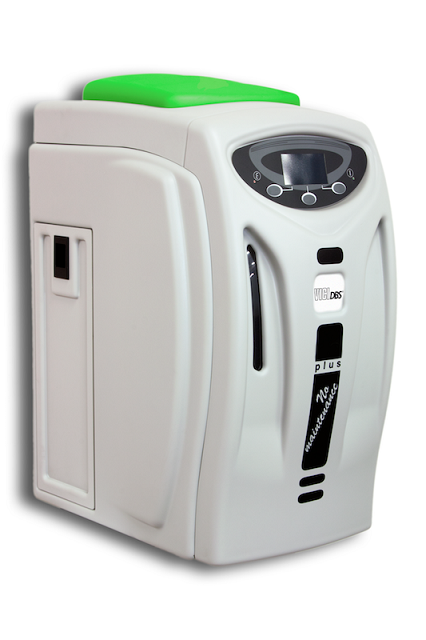 This machine uses best-in-world technology to produce the gas. The “NM” type of machine comes with a state-of-the-art cold automatic dryer system. Using the system, you can eliminate the remaining oxygen and moisture from the gas. Then, the system will regenerate the dryer. As a result, you aren’t required to maintain it. Hence, you have to use purely deionized or distilled water. It doesn’t need caustic solutions for supporting the electrolytic dissociation process.
This machine uses best-in-world technology to produce the gas. The “NM” type of machine comes with a state-of-the-art cold automatic dryer system. Using the system, you can eliminate the remaining oxygen and moisture from the gas. Then, the system will regenerate the dryer. As a result, you aren’t required to maintain it. Hence, you have to use purely deionized or distilled water. It doesn’t need caustic solutions for supporting the electrolytic dissociation process.
In this case, you don’t require desiccant or silica-gel cartridges as the end purification step. Besides, you don’t have to use palladium membranes also. There exists a user-friendly touch-screen digital display. While using the machine, you can get a reliable continuous output of pure 99.99996% gas. These are perfect for GC carriers and FID gases.
Features:
- The footprint comes in a small 9″ wide x 14.5″ deep size. It can conserve valuable lab bench space.
- This machine is made up of 100% Titanium electrochemical cell construction.
- It can deliver pressure to 160 psi. You can select the pressure according to your requirements. This feature makes the tool ideal for quick and high-speed GC methods.
- You can get LCD indications rapidly. Besides, it helps to monitor delivery pressure, hydrogen flow, and water quality.
- It allows users to use the machine with ease with the help of LCD based display and membrane control pad.
- Plenty of alarms are available that can notify you when you should reduce the water level, poor water quality, low pressure (leak), and power supply conditions.
- The machine is CE and CSA certified and offered a two-year system warranty.
-
GEH2: The zero-emission
Description:
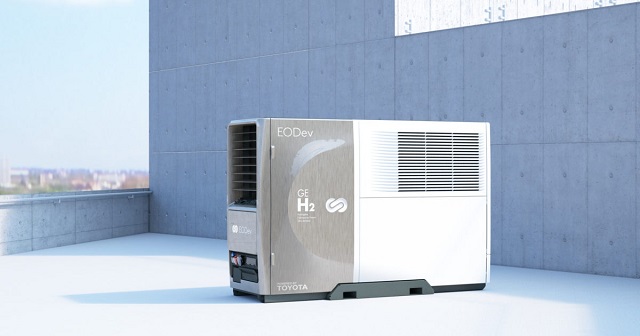 This latest model contains the recent generation of fuel cells. It is both reliable and durable. This model comes with a compact design. Besides, it is efficient enough also.
This latest model contains the recent generation of fuel cells. It is both reliable and durable. This model comes with a compact design. Besides, it is efficient enough also.
As of now, there will be no noise and black fumes. You do not have to wear earphones and anti-pollution masks. CO2, HC, NOx, and other harmful particles are not emitted. There exists merely hot water and filtered air.
-
HG ST BASIC
Description:
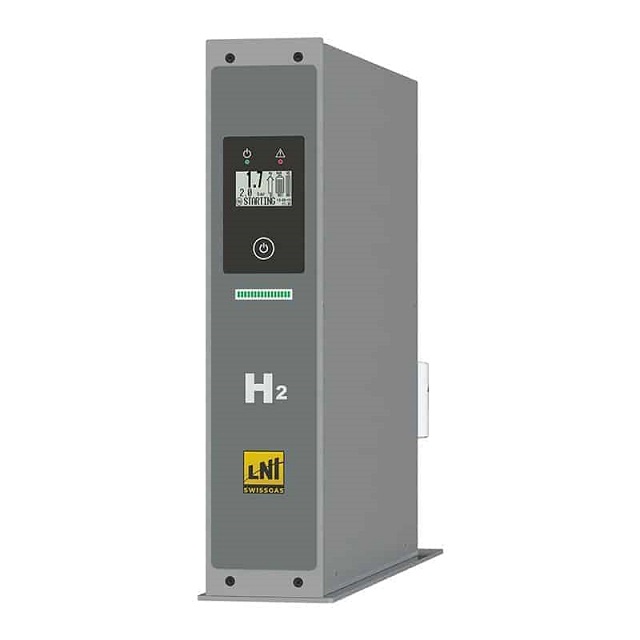 The machine is capable of producing gas up to 600 cc/min. The purity level is better than 99.9999%. It can handle pressure up to 145 psi, i.e., 10 bar. There presents a new long-life multilayer electrolytic cell with the polymeric membrane (PEM). You should use distilled water here. Make sure that you are not using any acid or alkaline solutions.
The machine is capable of producing gas up to 600 cc/min. The purity level is better than 99.9999%. It can handle pressure up to 145 psi, i.e., 10 bar. There presents a new long-life multilayer electrolytic cell with the polymeric membrane (PEM). You should use distilled water here. Make sure that you are not using any acid or alkaline solutions.
It comes with a unique drying system that ensures the maximum grade of purity. This system can offer protection to the GC. The exceptional humidity safeguard is helpful in this case. Users don’t have to maintain it. You can operate it 24 hours a day continuously. There is an onboard CPU that helps to check if there is an internal leak. It allows you to control the operating parameters. Thus, the model can give you a full safety guarantee. You can attach up to 20 units in parallel mode with the help of an external control box. A touch-screen LCD interface is there that allows you to manage all functions easily.
Features:
- You can install the model quickly.
- The machine is straightforward to use.
- It comes with a dryer that doesn’t require any maintenance.
- There exists a High-pressure GLS electronically controlled.
-
M series PEM Electrolyser
Description:
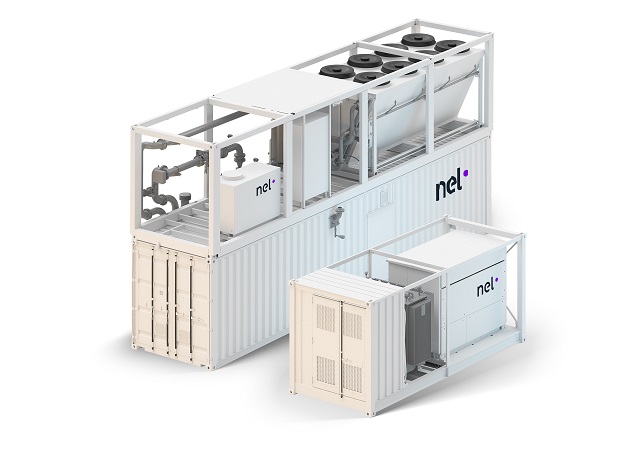 If you want a quick response, then the model is best. The production flexibility of the model makes it perfect for making gas. Therefore, you can now produce gas easily with the help of renewable power sources. The model requires minimal maintenance and siting needs. It can create up to 5,000 Nm3/h gas. The purity level remains at 99.9995% on-demand.
If you want a quick response, then the model is best. The production flexibility of the model makes it perfect for making gas. Therefore, you can now produce gas easily with the help of renewable power sources. The model requires minimal maintenance and siting needs. It can create up to 5,000 Nm3/h gas. The purity level remains at 99.9995% on-demand.
The machine comes in a scalable modular design. You can use the model for different purposes such as industrial, fueling, and renewable energy applications.
Features:
- The variable output is 0-100%.
- It is capable of ramping up and down within seconds.
- There are some indoor or outdoor options.
- It requires minimal maintenance.
- You can monitor the machine and control it through a remote.
-
NM Plus 100 Hydrogen Generator
Description:
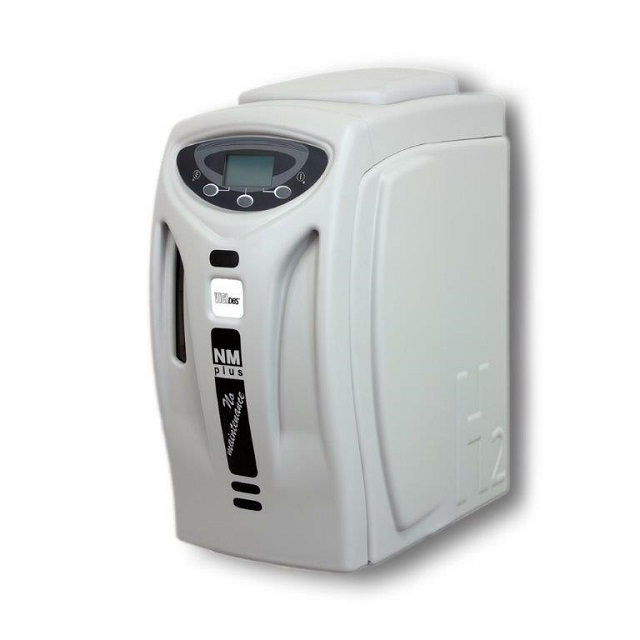 Now, you can get improved performance from the model with the help of a unique no-maintenance purification system. This machine can deliver ultra-high purity carrier-grade gas. You can control the machine via software. Besides, it comes with a safety alarm capability. These features help to boost the advantages of using this gas as a carrier gas.
Now, you can get improved performance from the model with the help of a unique no-maintenance purification system. This machine can deliver ultra-high purity carrier-grade gas. You can control the machine via software. Besides, it comes with a safety alarm capability. These features help to boost the advantages of using this gas as a carrier gas.
Features:
- The flow rate in this machine is 100 mL per minute.
- It can handle pressure up to 11 bar (160 psi).
- This machine is equipped with exceptional 100% titanium electrolytic cells.
- You don’t have to maintain the machine.
- It comes with a two-year standard warranty.
- There exists an I/O board, Autorefill, H2 Sensor, Remote control software (RS232 or USB), etc. It comes with cascading hardware.
Hydrogen Generator- Gadget Buying Guide:
These are available in multiple shapes and sizes. People use these machines for different purposes. These are helpful to run analytical instrumentation like GCs. Thus, it is capable of creating high purity, low-pressure gas at a precise flow rate.
However, a few are there that people use in other applications. For example, people use these for supplying the gas as a reactive gas for synthetic chemistry. In this case, you must require a higher pressure supply of gas.
A few sophisticated machines are available in the market. ThalesNano Energy H-Genie is an example of such a machine that has in-built mass flow controllers. It indicates that you can measure the flow from your machine.
How is Hydrogen Generator Safer than a Cylinder?
These don’t collect a high amount of gas inside themselves at any time, not at the time of operation, even when you don’t need it. Therefore, when a leak exists, a small amount of gas will emit.
On the other hand, a full cylinder can hold 11,000 liters of gas. Therefore, if any leak occurs, all gas will get out. The good ones come with sensors that are capable of identifying the gas as well as water leaks. As soon as you identify a leak, you should close the gas production.
More Cost-Effective than Cylinders:
These machines can make downtime costs, on-demand gas, eliminating gas wastes, delivery costs, cylinder rental charges, maintenance costs of cylinders, administration costs (re-order, price increase), etc.
If you are willing to return these, it will take less than one year. It relies on the needs of the application, i.e., usage and purity. Usually, bottles and deliveries take a long time. Using on-site gas production, you can supply the right amount of gas to the application with the right purity level. The cost of gas is not stable. If you use a lab gas on-site producer, the gas production will be on-demand. Therefore, you don’t need to rely on suppliers.
The maintenance of the lab gas producers is simple and very low. If you maintain it through remote, it will avoid disassembly. Thus, the manufacturer is capable of analyzing vital equipment parameters. Besides, these can detect pending failures quickly. LNI gas producers come with an energy savings competitive benefit, which you won’t get in others.
Can You Keep the Machine in a Cupboard?
When you put the machine, you have to maintain adequate airflow around it. Thus, these machines enable the ventilation system to perform. When you keep it in an enclosed space, you must control the environment through an air conditioner or extraction fan. You have to create the provision to allow air volume in the room.
When you use this, the rear part of the machine can be warm. It is recommended to have at least 15 cm (6”) space from other bodies.
The machines are made in such a way that they can remove waste gases safely. Thus, the device can stop growing any internal gas or pressure.
Can you place it outside the laboratory?
You can do this till you need to take help of the recommended environmental conditions for basic operation. When you decrease the pipework length, it will also help you reduce the cost if not installed. Thus, you can improve the installation safety also. If you are capable of it, try to place it near or close (< 10 m) to the GC/application.
Do Your GCs Have to be Ventilated?
If you want, you can use a fume extractor. You are capable of attaching tubing also between the exhaust of the machine and a fume-hood. When this gas emits from the GC, it diffuses in the air. Therefore, there exists no risk to laboratory personnel or the environment.
When you connect tubing to the exhaust ports, you should monitor them frequently. It is because kinks can produce gas, due to which you can encounter health and safety issues. LEL stands for lower explosive limit. For this gas, the limit is 4.1 %. You should see that the lab environment is not sealed entirely. There should be air conditioning in place for which air can pass easily.
Conclusion:
This article contains elaborated details of hydrogen generators. We hope that you will find the article helpful. The efficiency of the best hydrogen generator is around 90 %.
Hydrogen Generator- Frequently Asked Questions:
- Where is a Gas producer installed?
You can install gas cylinders easily outside for ventilation. On the other hand, you can install the in-house gas maker safely beside the instrument in the lab. It can be installed on the floor or a bench also. With the help of LNI, you can get a safe and easy solution for GCs.
- Can you run many devices from one machine?
The supply pressure and flow rate should be similar for every item. Besides, the total consumption of gas is under the maximum flow rate of the machine. You can take the help of a single high-pressure machine for handling the complete gas demand for a lab.
- Is the machine hard to install?
No, it is not so hard. You only need to eliminate packaging and then attach an external UV-protected deionized water bottle. Make sure that you connect it at the same height as the machine or under it. If necessary, then attach it to an electrical supply (10 Amp). You should attach the machine to the GC with the help of a 1/8” pre-cleaned refrigerant grade copper or stainless steel pipe.
- How hard is it to maintain?
You can maintain them quite easily. The maintenance process is cost-effective, and you don’t need to take the help of an engineer. You merely have to re-fill the deionized water reservoir weekly. You should take preventive maintenance (PM).
- How many GCs can a single machine supply?
A machine of 100 cc capacity is capable of supplying two FID detectors. The machine relies on the flow rate, carrier gas type, column, etc.


